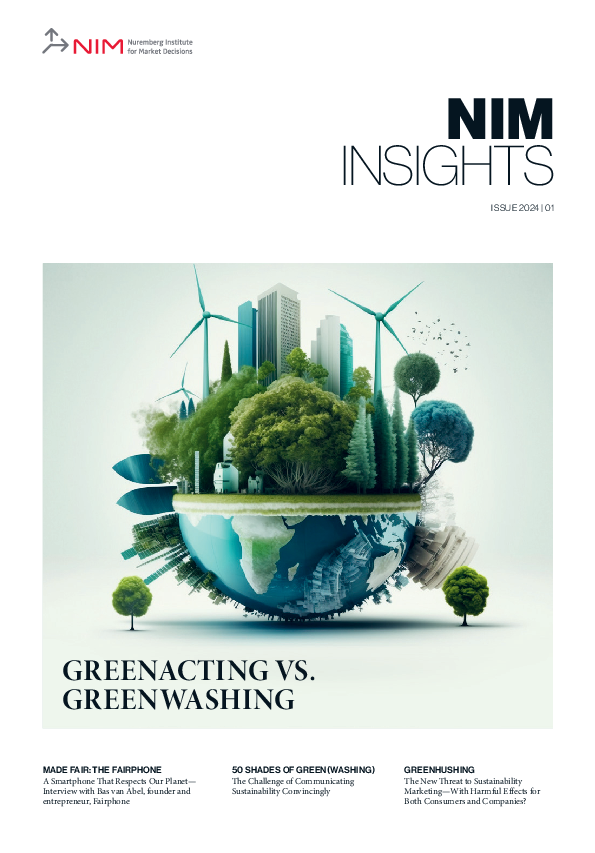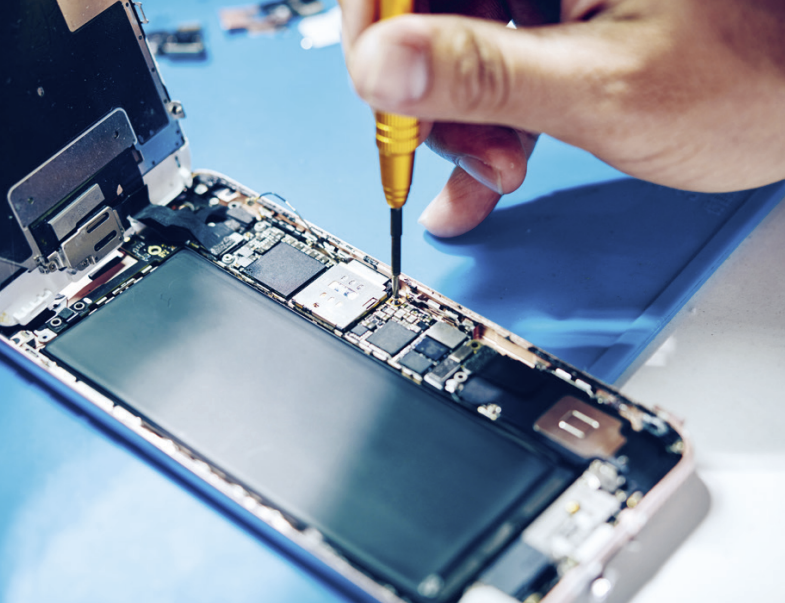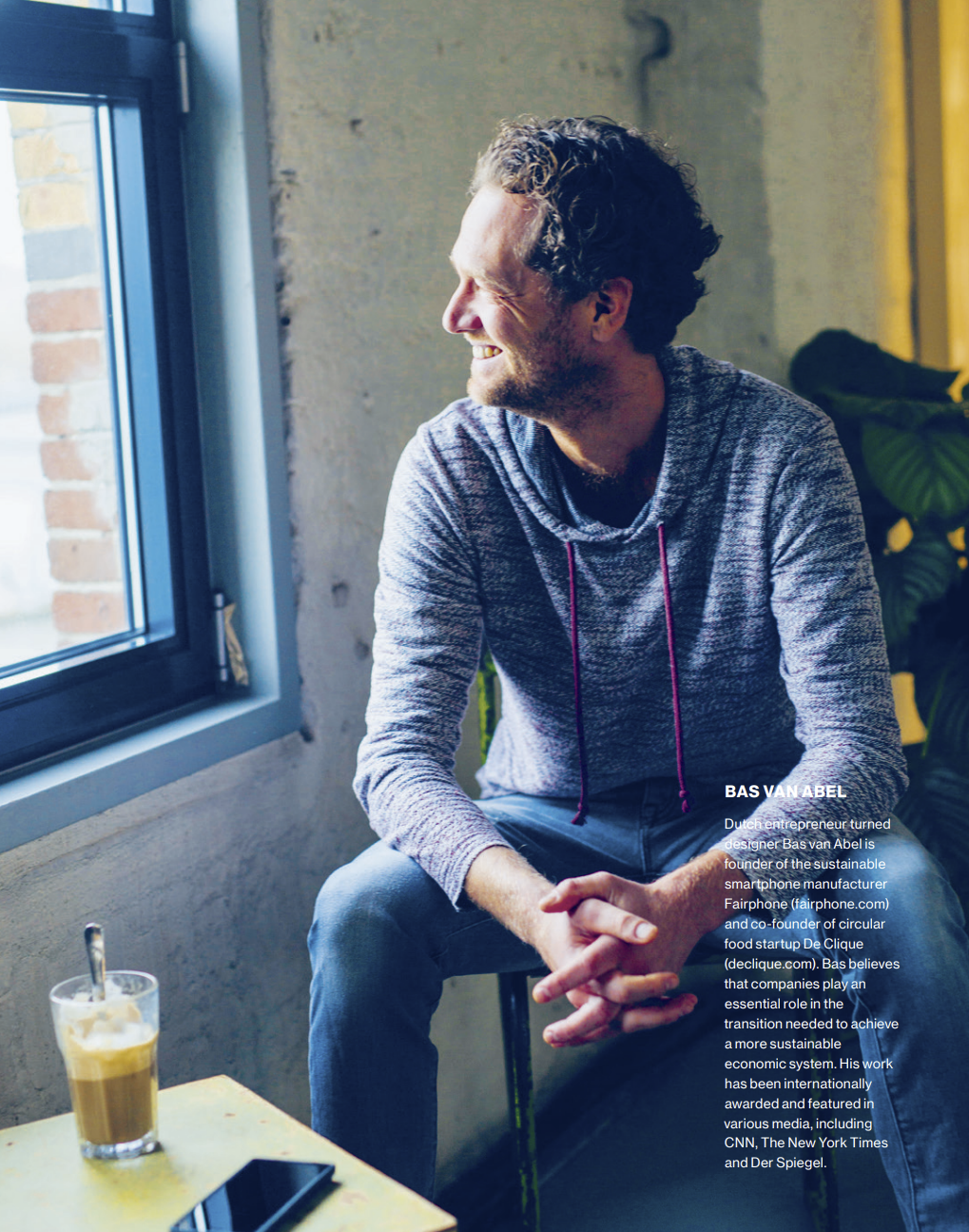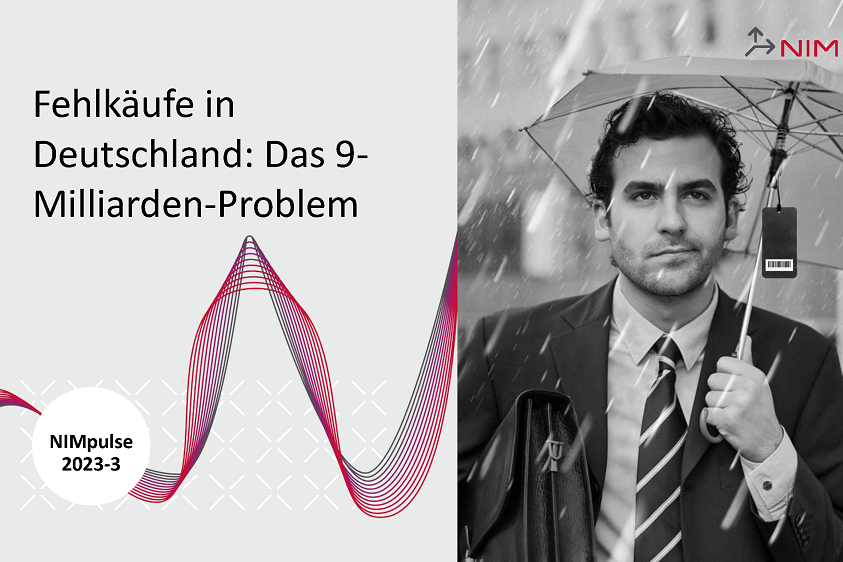Publications
2024
Imagine a Smartphone
Meet Fairphone, the smartphone company that’s redefining the very materials and ethics behind your favorite electronic device. In an interview with founder Bas van Abel, we uncover the roots of this revolutionary venture, exploring its humble beginnings as an awareness campaign to its ambitious mission to transform the global marketplace. Join us as we discover how this pioneering company faces complexities and hurdles in its pursuit of a more equitable and environmentally respectful tech industry.
Interview with Fairphone founder and former CEO Bas van Abel
To kick things off, could you give us some insight into the origins of Fairphone? What sparked the creation of the company, and what was the initial vision behind it?
BAS VAN ABEL: The idea for Fairphone began with a desire to raise awareness about conflict minerals in electronics. Most people are unaware that certain minerals in our daily electronic devices could be sourced from conflict zones. At first, we just wanted to create an awareness campaign about the topic. However, as we delved deeper into the supply chain, we realized that the best way to instigate real change would be to produce a phone that addressed these issues head-on. The goal was to show that it is possible to do things differently and to inspire the industry to follow our lead.
Where did you start? I read that a phone has 1,200 components made by hundreds of factories. It has 60+ minerals mined from all over the world.
As a designer, I have always been fascinated by how everything around us comes from or grows on the ground. Even something as complex as a smartphone starts out from a mine. And that’s the crux of the problem. We’ve lost our connection with things—what they’re made of, who made them, and where they finally end up. We simply don’t know anymore. Finding out was the genesis of Fairphone.
How has your perspective on sustainability evolved, and how has it shaped Fairphone’s business model?
Along the journey, we soon realized that it wasn’t just about conflict minerals. We began to see the broader picture—from the conditions in which miners work to the environmental impact of smartphone production and the e-waste generated when they’re discarded. We recognized that true sustainability is multifaceted. It encompasses human rights, e-waste reduction, and design longevity, among other things. Everything is connected to everything else. We can, for example, focus on child-labor-free mining, but we all know mining is bad for the environment, so we need to work on recycled materials too. We can focus on recycling electronic waste, but if we keep pushing more phones than needed into the market, it is like trying to empty the ocean with a thimble.
You take a more holistic approach to making a positive and lasting impact.
Yes. For instance, we are the first electronics company that uses Fairtrade gold and silver credits. We use 100% recycled plastics, foster projects for child labor-free mining, and set up the Fair Cobalt Alliance, which both Google and Tesla recently joined. We are the first in the industry to pay a living wage instead of the minimum wage wherever we work, and we have a bonus program for factories when they achieve certain sustainability goals. We also take back more phones than we put into the world through our takeback program and our partners in countries like Ghana, where phones end up and can’t be recycled properly. Instead, they are sent to European facilities where they are effectively processed.
Another important goal of the project was to create a positive shift in consumer behavior, is that right?
Exactly, we also want people to use their products longer. It’s a very simple calculation: If you use your phone twice as long, then manufacturers only need to produce half the number of phones, with 50% less waste. The most sustainable phone is the one that you already own. That’s why we build modular phones that are easily repaired, with components that are easily replaced. They come with a five-year warranty and are capable of eight years of software upgrades.
This modular design is an important part of your strategy, right?
Yes, it’s like an open invitation! We’re basically saying, “Hey, come on in! See what’s inside your phone. Understand it. Fix it. Keep it longer.” It’s a different approach. It’s our way of showing transparency right down to the device level. We believe in the motto “if you can’t open it, you don’t own it,” and with ownership, we believe, comes responsibility. We want to de-alienate people from technology by making them active users. I think this thinking comes from my background as an open-source software and hardware engineer.
“Sustainability is not black and white. It is full of dilemmas, and sometimes it's messy.”
Bas von Abel
How important is transparency for Fairphone?
We often have no idea about the history or creation of the products we buy. We wanted to change that by showing people the “ingredients” of their phones, from the metals used to the hands that assembled them. We’re not just selling a product — we’re telling a story. That’s why transparency became so crucial for us.
How do you implement and maintain transparency?
We’re open about our supply chain and communicate where our materials come from and who our suppliers are—the good stuff and the challenging parts. It’s essential for people to see the real journey, not just a polished marketing version. Sustainability is not black and white. It is full of dilemmas, and sometimes it’s messy.
Let’s talk about making money. How do you reconcile the philosophy of “use your phone as long as possible” with the business need for sales? How has this impacted your customer loyalty?
Of course, this is a kind of dilemma: We are a business producing and selling phones, but we also want people to use their phones for as long as possible. But here’s the thing. We’re not just selling a product; we’re also selling an idea, a philosophy. So, in our marketing, we emphasize the lasting value of Fairphone. It’s like telling our customers, “Hey, you’re not just getting a phone—you’re joining a movement.” To address your point about sales: By promoting this philosophy, we’ve built a very loyal customer base. People come to us because they believe in what we’re doing. And while they might not replace their phones often, they become ambassadors for our brand, and that’s invaluable.
Is such a business model also economically sustainable? Is there enough profit left over for investments?
Absolutely. At the core of Fairphone’s ethos is the belief that sustainability isn’t just environmental or social but also economic. For us, the challenge has always been about striking the right balance. Our mission is to create a positive impact, but we also recognize that for the longevity of our initiative, we must be financially viable. Of course, there are challenges. Ensuring ethical sourcing, for instance, can sometimes be more expensive than conventional sourcing. But by being transparent about our costs and where the money goes, we’ve built trust with our community. Plus, reducing waste and promoting repairability can lead to cost savings in the long run. We are happy to be an economically sustainable and profitable company, and we reinvest those profits into furthering our initiatives and creating social value.
Looking back at Fairphone’s journey, what advice and insight can you give businesses and entrepreneurs looking to prioritize long-term sustainability and value creation?
Central to our approach is understanding that today’s consumers are seeking more than just products; they are seeking meaning. As the line between consumption and values blurs, businesses have a prime opportunity to connect with their audience on a deeper level. Authenticity is paramount. In our age of information, consumers are savvy. They appreciate transparency and will often rally behind brands that genuinely share both their successes and their struggles. Merely branding something as “green” is not enough; your commitment must resonate in your actions. Furthermore, fostering a sense of community is invaluable. Engage with your stakeholders—be it other entrepreneurs, customers, or critics. Listen, learn, and act based on their feedback. Lastly, education is key. It’s essential to shift the narrative from mere acquisition to holistic value. Offer tangible, sustainable alternatives and highlight the broader benefits to individuals and the planet. People inherently want to make impactful choices— businesses just need to empower them and guide them in that direction. Staying true to your mission is challenging but also immensely rewarding, and it ultimately paves the way for a brighter, more conscious future.
Thank you so much for the interview.
This Interview was conducted by Dr. Fabian Buder









